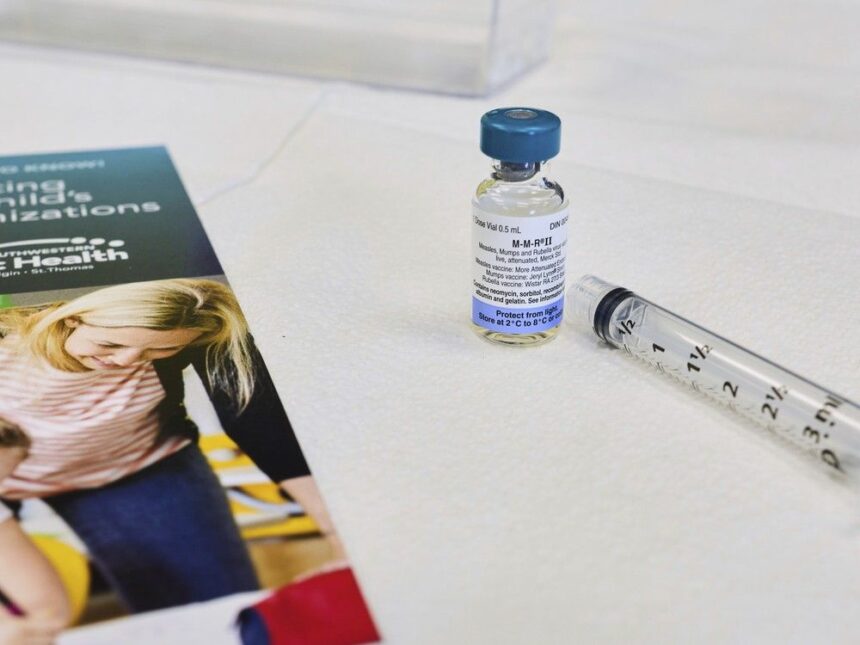In an alarming reversal of decades of public health progress, global childhood vaccination rates are experiencing a significant downturn, leaving millions of children vulnerable to diseases that were once on the verge of elimination. The implications of this decline extend far beyond individual families, threatening to unravel hard-won gains in child mortality reduction and potentially igniting outbreaks that could strain healthcare systems worldwide.
Recent data from the World Health Organization reveals that basic immunization coverage has fallen to its lowest level since 2008, with an estimated 67 million children missing crucial vaccines between 2019 and 2023. This decline spans both developing nations and high-income countries, suggesting a complex interplay of factors rather than a simple resource disparity issue.
“What we’re witnessing is unprecedented in modern public health history,” explains Dr. Michelle Walters, immunization specialist at the Toronto Institute for Global Health. “The combination of pandemic-related disruptions, rising vaccine hesitancy, and reduced healthcare access has created a perfect storm that threatens decades of progress.”
The consequences are already becoming apparent. Measles—a highly contagious disease that had been controlled through routine vaccination—has surged in multiple regions. In 2023 alone, reported cases increased by 79% globally compared to the previous year, with devastating outbreaks in countries that had previously eliminated the disease.
The causes behind this vaccination decline vary by region but share common themes. In many developing nations, the COVID-19 pandemic severely disrupted routine healthcare services, redirecting limited resources and creating logistical barriers to vaccination programs. Meanwhile, in higher-income countries including Canada, the spread of vaccine misinformation through social media has fueled hesitancy among parents.
“The paradox of vaccines is that their very success has made some forget why we needed them in the first place,” notes Dr. Andrew Chen, pediatric immunologist at Hamilton Children’s Hospital. “When parents haven’t witnessed these diseases firsthand, it becomes easier to focus on theoretical risks rather than the very real dangers of the diseases themselves.”
Economic analyses indicate the potential costs extend beyond immediate health concerns. According to research published in The Lancet, every dollar invested in immunization yields up to $44 in economic returns through reduced healthcare costs and improved productivity. The current backslide threatens to reverse these economic gains precisely when many countries face fiscal constraints.
Canadian health authorities have expressed particular concern about vaccination rates in certain communities where coverage has fallen below the threshold needed for herd immunity. Recent data from the Public Health Agency of Canada indicates that MMR (measles, mumps, rubella) vaccination completion rates have dipped below 90% in several provinces—significantly short of the 95% needed to prevent community transmission.
“This isn’t just a health issue—it’s a matter of equity,” emphasizes Dr. Sarah Townsend, public health researcher at the University of British Columbia. “Vaccine-preventable diseases disproportionately affect vulnerable populations, including indigenous communities and those living in poverty. When vaccination rates decline, these disparities only worsen.”
International organizations are mobilizing to address the crisis. UNICEF and WHO have launched an ambitious “Immunization Recovery and Transformation” initiative, aiming to reach 90% vaccination coverage globally by 2030. However, experts caution that success will require coordinated action at every level—from global policy to community engagement.
For parents navigating vaccination decisions in an environment rife with conflicting information, pediatricians recommend focusing on evidence-based resources and discussing concerns directly with healthcare providers rather than relying on social media for medical advice.
As world leaders prepare to address this issue at the upcoming Global Health Summit, a fundamental question remains: will the international community muster the political will and resources needed to reverse this dangerous trend before preventable disease outbreaks claim more children’s lives? The answer may determine the health trajectory for an entire generation.










